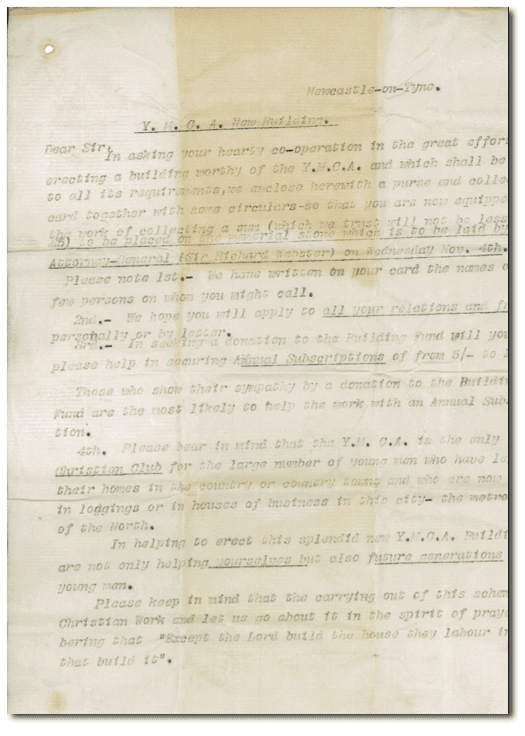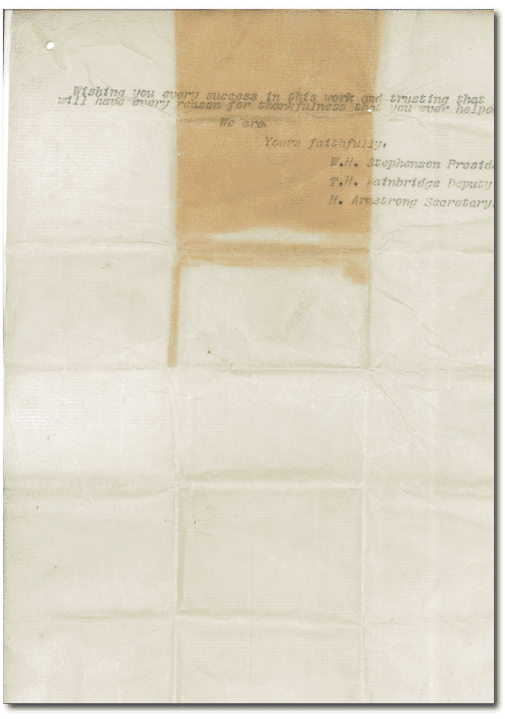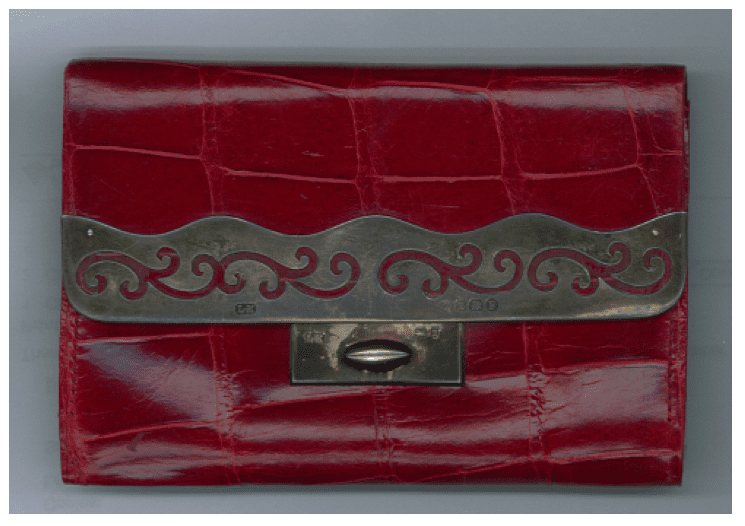Fundraising 1880s style
Another treat from the archives from Gary Shearin at the YMCA.
This time it's an appeal letter from the 1880's and It's a cracker. The goal is the construction of a new YMCA in Newcastle-on-Tyne.
In effect, it's a very early version of face to face recruitment with a fundraising target of £5 (which is the equivalent of requesting £450 today).
The letter asks the fundraiser to visit a selection of identified prospects along with all their relatives and friends.
They are asked to collect the victorian equivalent of the direct debit – an annual subscription – of at least 5 shillings (25 pence). The advice is that those people who give a single donation are most likely to agree to a regular gift.
To help, they are given a purse to hold the money they collect (which could possibly fall foul of the current IOF codes of fundraising practice!) with the promise that this will be placed on the building's memorial stone to be laid by the Attorney General.
Finally the letter gives a nod to donor needs, pointing out the YMCA will be available for their and their children's use (only the the male ones at that time, unfortunately) before giving an endorsement from the bible.
It's interesting to note that the letter avoids the unnecessary detail that makes so many of today's fundraising materials so turgid. Though I'd probably like a little more on what exactly the fundraiser will be achieving by getting involved.
For good measure, the letter is signed by three upstanding members of the local community.
The result was this fine building.
The rest of Gary's discoveries, will be making their way to SOFII. I'll make sure I let you know when they are up.
And finally, the all-important purse.
Tags In
The Essentials

Crack the Code to Regular Giving: Insights, Strategies, and a Special Giveaway!

‘Tis Halloween. Keep to the light and beware the Four Fundraisers of the Apocalypse!

Why do people give? The Donor Participation Project with Louis Diez.

A guide to fundraising on the back of a postcard

What does the latest research tell us about the state of fundraising?








